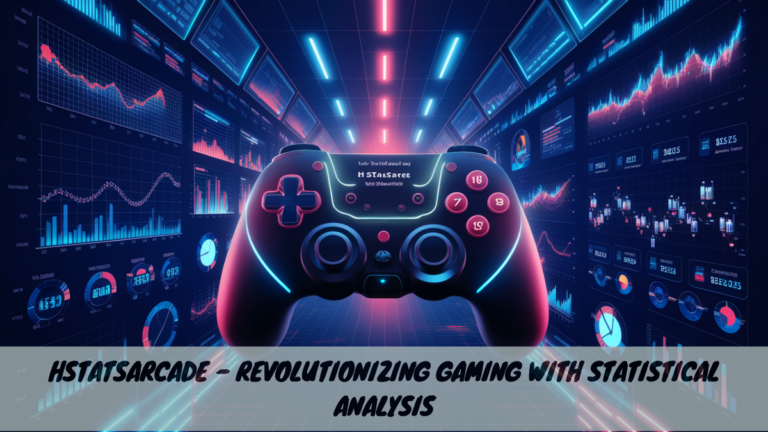Unveiling the Power of Social Stats BounceMediaGroup.com
Introduction
Understanding social statistics, particularly on platforms like BounceMediaGroup.com, is pivotal in today’s digital landscape. These metrics serve as benchmarks for engagement and brand visibility, offering valuable insights into audience preferences, trends, and competitive positioning. By analyzing engagement rates, follower demographics, and content performance across various channels, stakeholders can make informed marketing decisions and create content that resonates authentically with their target demographic.
This data not only guides strategic marketing initiatives but also fosters meaningful engagement and builds long-term brand loyalty. Ultimately, BounceMediaGroup.com leverages social media analytics as a strategic tool to optimize digital campaigns, enhance customer interactions, and drive sustainable growth in a competitive digital marketplace.
also read : Snapigram – The Ultimate Guide to the Popular Social Media Platform
1. The Role of Social Stats BounceMediaGroup.com: Enhancing Social Media Engagement
Social stats BounceMediaGroup.com provide an in-depth look at how the platform engages with its audience. These statistics include metrics such as likes, shares, comments, and follower growth, which collectively paint a picture of the platform’s reach and influence. By monitoring these metrics, BounceMediaGroup.com can identify what content resonates with its audience, enabling more effective and targeted social media strategies.
Key Metrics for Social Media Presence:
- Engagement Rates: The ratio of interactions (likes, comments, shares) to total followers.
- Follower Demographics: Age, gender, location, and interests of the audience.
- Content Performance: Analysis of which posts are most successful in terms of engagement.
Case Study: BounceMediaGroup.com’s Viral Campaign
In 2023, BounceMediaGroup.com launched a campaign focusing on eco-friendly products. By tracking social stats, they identified that posts highlighting environmental benefits had higher engagement rates. This insight allowed them to double down on similar content, boosting overall visibility and brand loyalty.
2. The Importance of Social Data for BounceMediaGroup.com
The significance of social stats cannot be overstated. They provide actionable insights that help shape marketing strategies and content creation. By understanding these metrics, businesses can tailor their approach to meet the needs and preferences of their audience.
Importance of Social Stats:
- Trend Identification: Recognizing emerging trends within the audience.
- Content Optimization: Fine-tuning content to increase engagement and reach.
- Competitive Analysis: Comparing performance against industry competitors to identify strengths and weaknesses.
Example: Adapting Content Strategies
BounceMediaGroup.com noticed a significant uptick in engagement during weekends. This led to a strategic shift in their posting schedule, focusing more on high-impact content during these peak times.
3. Analyzing the Impact of Social Metrics on BounceMediaGroup.com
To fully leverage social stats, a structured analytical approach is essential. This involves collecting data, analyzing trends, and making data-driven decisions. Tools like Google Analytics, Hootsuite, and Sprout Social can aid in this process, providing detailed reports and insights.
Steps in Analytical Approach:
- Data Collection: Gather data from various social media platforms.
- Trend Analysis: Identify patterns and trends in the data.
- Actionable Insights: Derive insights that can inform marketing and content strategies.
- Implementation: Apply insights to improve social media performance.
Analytical Tools:
- Google Analytics: Offers comprehensive data on website and social media performance.
- Hootsuite: Manages multiple social media platforms and provides detailed analytics.
- Sprout Social: Provides insights on audience demographics and content performance.
4. Key Performance Indicators for BounceMediaGroup.com’s Social Media
Understanding performance metrics is crucial for any digital strategy. These metrics provide a quantitative measure of success and areas for improvement.
Core Performance Metrics:
- Engagement Rate: Indicates how actively the audience interacts with the content.
- Reach and Impressions: Measures how many people have seen the content.
- Conversion Rate: Tracks the percentage of viewers who take a desired action, such as clicking a link or making a purchase.
Insight Example:
BounceMediaGroup.com discovered that video content had a 20% higher engagement rate compared to image posts. This insight prompted a shift towards more video-centric content, leading to increased overall engagement.
5. Demographic Insights from BounceMediaGroup.com’s Social Stats
Audience demographics are a key component of social stats, offering insights into who is engaging with the content. This information can be used to tailor marketing efforts to better meet the needs of specific segments of the audience.
Key Demographic Insights:
- Age and Gender: Helps in creating targeted content that resonates with specific age groups and genders.
- Location: Enables geo-targeted campaigns and localized content.
- Interests and Preferences: Provides insight into what the audience cares about, allowing for more personalized content.
Example:
By analyzing audience demographics, BounceMediaGroup.com identified a growing segment of young adults interested in sustainable living. This led to the creation of targeted campaigns focused on eco-friendly products, which saw a significant increase in engagement from this demographic.
6. Content Performance Analysis on BounceMediaGroup.com
Content analysis is crucial for understanding what types of content perform best. By examining various content formats and themes, businesses can refine their strategies to maximize engagement.
Types of Content:
- Text Posts: Share information or updates in written form.
- Images: Visual content that captures attention.
- Videos: Dynamic content that tends to have higher engagement rates.
- Infographics: Combines visuals and text to present information in an easily digestible format.
Content Analysis Example:
BounceMediaGroup.com’s analysis revealed that posts featuring user-generated content (UGC) had higher engagement rates. This insight led to an increased focus on UGC, encouraging followers to share their own content and tag the brand, thereby increasing organic reach and engagement.
7. Benchmarking BounceMediaGroup.com’s Social Media Against Competitors
Benchmarking performance against industry standards is essential for understanding relative success and identifying areas for improvement.
Key Industry Benchmarks:
- Average Engagement Rate: Provides a standard for comparison.
- Follower Growth Rate: Measures the pace at which an audience is expanding.
- Content Shareability: Assesses how often content is shared relative to industry norms.
Benchmarking Example:
BounceMediaGroup.com’s engagement rate was found to be 15% higher than the industry average. This strong performance was attributed to a well-targeted content strategy and active community management.
8. Integrating Social Insights into Digital Marketing Strategies
Social media insights have a profound impact on digital marketing strategies. They inform decisions regarding content creation, advertising spend, and audience targeting, ultimately driving more effective and efficient campaigns.
How Social Media Insights Influence Marketing:
- Content Strategy: Insights guide the creation of content that resonates with the audience.
- Advertising: Data-driven decisions optimize ad targeting and spend.
- Audience Engagement: Understanding audience behavior leads to more meaningful interactions.
Example:
BounceMediaGroup.com used social media insights to refine their advertising strategy, focusing on high-engagement demographics. This resulted in a 30% increase in ad click-through rates and a significant boost in conversions.
9. Future Strategies for Optimizing Social Media Impact
Looking ahead, BounceMediaGroup.com can further enhance its social media impact by embracing new trends and technologies, and by continually refining its strategies based on data-driven insights.
Future Strategies:
- Embrace Emerging Platforms: Experiment with new social media platforms to reach wider audiences.
- Leverage AI and Automation: Use AI to analyze data and automate routine tasks, freeing up time for strategic planning.
- Invest in Influencer Partnerships: Collaborate with influencers to extend reach and build credibility.
Strategic Recommendations:
- Increase Focus on Video Content: Given its higher engagement rates.
- Enhance Community Engagement: Foster a strong online community through regular interaction and user-generated content.
- Utilize Advanced Analytics Tools: Invest in sophisticated tools for deeper insights and more accurate data.
10. Conclusion
Social stats BounceMediaGroup.com provide a wealth of information that can be leveraged to enhance digital marketing strategies. By understanding and analyzing these metrics, businesses can create more effective campaigns, engage with their audience more meaningfully, and drive sustainable growth. The insights gained from social stats are invaluable in navigating the competitive digital marketplace and achieving long-term success.
11. Frequently Asked Questions
1. What are social stats?
Social stats refer to the metrics and data collected from social media platforms that indicate engagement, reach, and overall performance.
2. How can social stats benefit my business?
Social stats provide insights into audience behavior and preferences, helping businesses tailor their marketing strategies for better engagement and higher conversion rates.
3. What tools can I use to analyze social stats?
Popular tools for analyzing social stats include Google Analytics, Hootsuite, and Sprout Social.
4. Why is audience demographic information important?
Audience demographics help businesses understand who their audience is, allowing for more targeted and effective marketing efforts.
5. How often should I review my social stats?
Regular review of social stats is recommended, typically on a weekly or monthly basis, to stay informed about trends and adjust strategies accordingly.
6. What is the most important social media metric?
While all metrics provide valuable insights, engagement rate is often considered the most important as it directly reflects how actively the audience is interacting with the content.
How can I increase engagement rates on my social media posts?
To increase engagement rates, focus on creating high-quality, relevant content, use visuals and videos, engage with your audience by responding to comments, and post consistently at optimal times.







